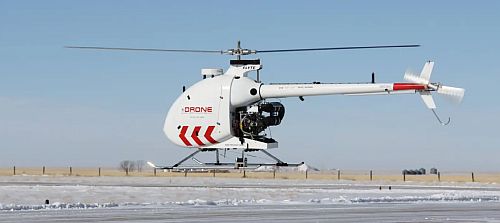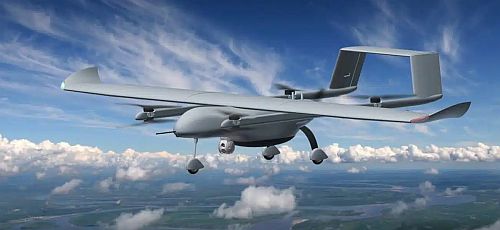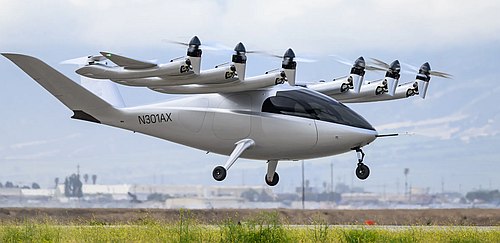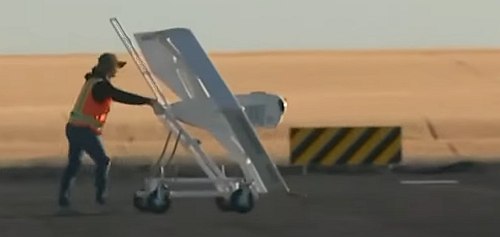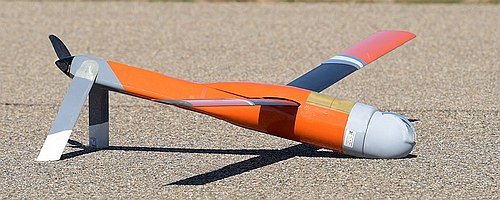Podcast: Play in new window | Download (Duration: 32:16 — 22.2MB)
uAvionix detects ADS-B spoofing, racing drones are delivering explosives, an aerial tanker that autonomously guides and controls multiple drones, self-flying F-16s that test loyal wingmen, the Condor heavy-lift UAV wins its first customer, a new mini light tactical UAS, and Archer Aviation and United Airlines plan air taxi service in Chicago.
UAV News
uAvionix Announces truSky ADS-B Spoofing Detection for SkyLine UAS BVLOS Operations
uAvionix offers its SkyLine UAS BVLOS service to manage the command and control infrastructure and assets across diverse frequency and radio types. Now the company is introducing truSky ADS-B spoofing detection for Skyline. It validates that a particular ADS-B signal is actually coming from an aircraft, and not being broadcast to spoof the signal.
ADS-B spoofing can be used for nefarious purposes and interferes with ATC and detect and avoid systems. It compromises airspace awareness and risks airspace safety and security.
uAvionix truSky works with a network of low-cost dual-frequency ADS-B ground receivers. The aircraft’s signal is confirmed to come from the aircraft’s position. With multiple sensors, truSky backward calculates the aircraft’s position and compares it to the position stated in the ADS-B transmission. When used with the uAvionix SkyLine platform, aircraft are color-coded based on confidence scores.
How racing drones are used as improvised missiles in Ukraine
The war in Ukraine seems to be demonstrating the use of drones in a conflict like never before. Ukraine is even using racing drones as loitering munitions. In a video released last year, a racing drone dives through an open doorway into a building occupied by Russian troops and explodes. There is even a Ukrainian military drone team called Angry Birds. They say they carry out half a dozen racing-drone attacks a day.
Airbus tanker plane takes autonomous control of multiple drones
Airbus Defence and Space has autonomously guided and controlled drones using an A310 Multi-Role Tanker Transport (MRTT) flying testbed. The technology is called Auto’Mate, which cuts down on crew fatigue, human error, and training costs. This is seen as a milestone on the way to fully Autonomous Formation Flight and Autonomous Air-to-Air Refueling (A4R).
US Air Force plans self-flying F-16s to test drone wingmen tech
The Air Force plans a fleet of at least 1,000 collaborative combat aircraft, or CCA. But you can’t have loyal wingmen without trusted autonomy, so the service has asked for $50 million to start Project Venom (Viper Experimentation and Next-gen Operations Model). The project would let the Air Force experiment with six F-16s to test and refine the autonomous software.
Drone Delivery Canada sells its first Condor heavy-lift UAV
Drone Delivery Canada sold their first Condor heavy-lift UAV to the Transport Canada agency. The sale was valued at CAD $1.2 million ($880,000) and the company will provide operating and testing support. Air Canada was the sales agent brokering the deal. The Condor is 22 feet long, five feet wide, and seven feet tall with a cargo capacity of 400 pounds. The range is just over 124 miles and the operating speed is nearly 75 mph.
SURVEY Copter Unveils ‘CAPA-X’ Modular VTOL UAV
At the SOFINS Special Forces exhibition, SURVEY Copter presented a new light tactical UAS called the CAPA-X [PDF]. It features a modular design: Propulsion can be configured for VTOL or HTOL and the payload bay can integrate different types of sensors. Either short or long wings can be configured for hovering at high cruising speeds, or for increased flight autonomy. SURVEY Copter has been an Airbus subsidiary since 2011. They design, produce, and provide operational support for light tactical UAS.
Archer Aviation and United Airways Establish Air Taxi Route in Chicago
The companies announced their plans to launch an air taxi service in Chicago in 2025. Passengers will fly a 10-minute trip between O’Hare International Airport (ORD) and Vertiport Chicago. Archer Aviation has flown its prototype, the “Maker” and the production aircraft is the “Midnight.” Archer plans to deploy 6000 aircraft By 2030.
Video: United and Archer Announce Next UAM Route: Chicago


